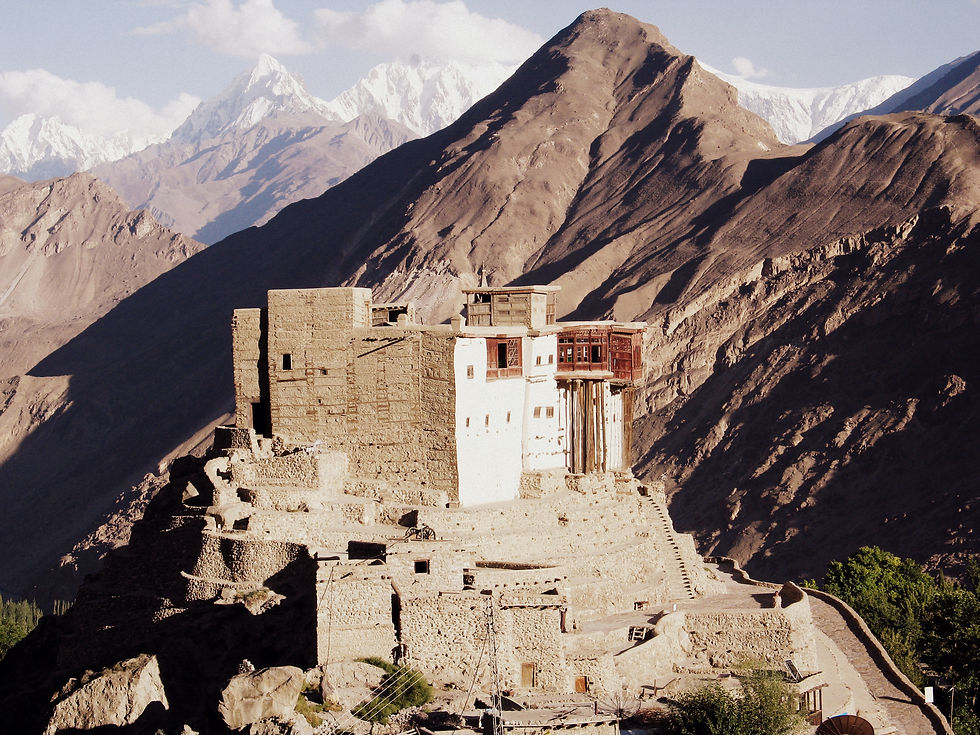Traversing the Tibetan Plateau: Part III - Lhasa to Yunnan
- HOWS

- May 20, 2020
- 6 min read
Updated: May 29, 2020
In the autumn of 2007, I made one of my most memorable journeys; from Xinjiang, in far Western China, I crossed the Aksai Qin and over the Kunlun Mountain Range, entering the high Tibetan plateau. For the next seven weeks, I traversed Tibet - from Ngari in the far West, through Amdo and Lhasa to Kham; the culturally Tibetan regions of Sichuan and Yunnan.
This article covers the final part of the journey: 3800 km descending from Lhasa out of the "official" Tibet Autonomous Region (TAR) through the historical Tibetan areas of Amdo and Kham, in today's Qinghai, Sichuan and Yunnan provinces.
This region was probably the most fascinating, dramatic and colourful of the entire trip across Tibet. As it's not officially Tibetan, it hasn't received the same amount of attention by the Chinese government towards sinicising it. It felt like a forgotten, quiet and very traditional corner of Tibet; rough and super local travel passing from the heights of the Tibetan plateau, along it's craggy, eastern edge and down into the lowlands of Yunnan.
Lhasa to Xining
The Lhasa Express. In 2001 the Chinese government proudly unveiled plans for its herculean project: a 1757km-long, US$3.2 billion train line from Lhasa to Xining. Constructed between 2001 and 2007, four-fifths of the line ride above 4000m. Over 60 medical clinics were built to deal with altitude sickness, and more than half the distance is atop permafrost. A cooling system was developed to protect the permafrost from heat generated by the train, and maintain stability, using metal bars of liquid ammonia.
The journey was a very comfortable 24 hours in the sleeper carriage of the train, with striking views across the plateau to the distant mountains.
Kumbun Monastery
Kumbun Monastery was built in 1583 and lies a short distance from Xining, the capital and only large city of the Chinese province of Qinghai. It's part of the Gelug School of Tibetan Buddhism and second in importance only to the Drepung Monastery in Lhasa.
Xining to Yushu
Historically part of Kham in Eastern Tibet, the Yushu Tibetan Autonomous Prefecture is now part of Qinghai Province. The 747km journey only took 16 hours - a vast improvement on previous road trips in Tibet, thanks to the velveteen road.
Yushu itself - with the exception of the Yushu Monastery high up on the hill - was rather depressing. I was stuck here for a few days as I couldn't find find the way to get out! It was a strange feeling. Finally on day 3, a taxi driver took me to a nondescript bus stop and I was fortunate to find a bus headed to Ganzi. This region is way off any tourist route - it's serviced by local buses for local travellers - which makes it all the more exciting!
Yushu to Manigango
8.5 hours, 220km in this old, decrepit bus, filled with chain smoking Chinese men and a few Tibetan nuns. The road took us up and up over bumpy roads - at the high passes, we threw papers printed with prayers out the window and the Tibetans murmured something. The view was stunning - grasslands changing into craggy mountain scenes, semi-nomadic Tibetan settlements and three or four larger towns with huge monasteries at their centers.
Manigango & Dege
Manigango is a one street town that serves as a logistics base for some of the sites around it - namely Dege.
The journey from Manigango to Dege, via a hitched ride with a local, was mind-blowingly stunning. We passed a group of pilgrims on the way, prostrating their way along the ground towards Lhasa, hundreds of kilometres away. In Dege, another group of pilgrims, this time nuns, had just arrived from some distant place. Prostrating their way into the monastery, I was fortunate enough to see them end their weeks or months of pilgrimage. After entering the central courtyard, and prostrating their final step up the staircase, they slumped - utterly exhausted but thrilled - against the columns of the building.
Dege town was a major Tibetan cultural centre and is home to a three-story, 270 year old printing house. The printing is still done entirely by hand using carved, wooden blocks. The lamasery houses around 217,000 engraved blocks, comprising 70% of Tibetan literary heritage. Scriptures printed here are from the five Tibetan buddhist sects, including Bon and include ancient works on astronomy, geography, music, medicine and buddhist classics. An example is a history of Indian buddhism, using 555 wood block plates, is the only surviving copy in the world, written in Hindi, Sanskrit and Tibetan.
The town itself, perched on the border with the Tibet Autonomous Region, was a lively little spot. On my wanderings around the few houses, I stumbled upon two minstrels, one playing a flute and another a six string Dramyin. We shared a cha-ngamo in the local tea house while we tried to communicate in broken Chinese.
Manigango to Rongpatsa
As a solo female traveller, I generally tend to err on the side of caution - I like to travel with a rough idea of where I'm going and tend not to make too many spur of the minute decisions without at least a little background info. But on the journey onwards from Manigango to my destination of Ganzi, the bus rumbled through a cluster of buildings which were just so exquisitely beautiful that I called to the driver to stop and jumped off the bus.
This village, called Rongpatsa, nestled in a wide, grassy valley with the snow-capped Choma Mountains in the West, and massive fort-like houses painted in stripes of white and grey on the mud walls. Luckily for me, the only guesthouse was closed. Wondering where I could spend the night, I wandered into the Adhi Nunnery Tibet Restaurant, run by three sweet, young nuns who invited me to stay with them. To this day I remember their kindness and generosity. They put me up in one of the three beds, tucking me in like a mother. Rimoche, the oldest nun, repaired the holes in my gloves. She kept trying to insist on hand washing my clothes, but that I couldn't hear of!
Rongpatsa to Ganzi & Tagong
Rimoche needed to travel to the larger town of Ganzi to stock up on supplies, so the next day we took the bus together. Ganzi was nondescript, but had a few lovely monasteries to visit. The following day, Rimoche saw me off on another bus, onwards on my journey south to Tagong.
Tagong
9.5 hours later, journeying through some spectacular snow-scapes, I arrived in Tagong, a fascinating little town filled with monks playing billiards on the footpath, cowboy-looking men driving up and down the main drag on their motorcycles, and women out shopping, dressed in all their brocade finery. Walking up and down the main road was a study in local architecture.
Tagong to Litang
The 280km, 7.5 hour journey to Litang skirted the edge of the massive Qinghai-Tibet Plateau; we were surrounded by mountains in every direction, driving up and down narrow mountain roads, across passes shrouded in mist and along snow-covered cliffs. One striking site was kilometres after kilometres of Chinese army trucks lined up on the side of the road. Finally in the late afternoon, we emerged from one pass above a sun-soaked, wide and grassy valley. The town of Litang - commanded by an incredibly striking monastery on the slopes - was lit up in the golden light.
I made the kora around the outer limits of the monastery, chanting "om mani padme hum" with the old Tibetan pilgrims, then one to explore the inside of the monastery. I was invited to share a dinner with some monks which was a rare treat. As we ate the tasty thump, they melted yak butter in large teapots to refill their lamps, and counted the wads of money left by pilgrims. The monastery makes around 4000 yuan per day (around 1300 USD at that time) from which it has to sustain 2000 monks.
Last stop: Lijiang
The last leg of this journey from Litang took a few days, making a final ascent up through the mountains and then descending off the high Tibetan plateau and from Sichuan to Yunnan. Going South, parallel to the Mekong River off the West, we passed along Tiger Leaping Gorge and into lush lowlands with wide rivers and highly populated towns, via Zhongdian - a town labeled by the Chinese as the official "Shangri La" - the inspiration for Jame's Hilton's "Lost Horizon".
Along with the change in scenery, came a sudden change in demographics, dress and architecture. By the time I reached Lijiang, Tibet was well and truly behind me. Tibetan people and culture had given way to the Naxi, puer tea and one of the most beautiful towns I've ever seen. It made for a gentle goodbye to Tibet; truly one of the most exceptional places on the planet.








































































































































































































































































Comments